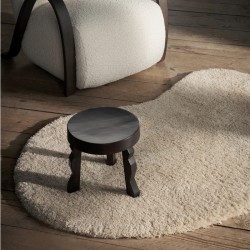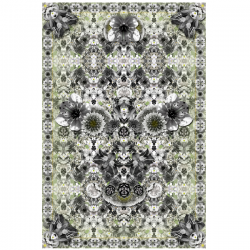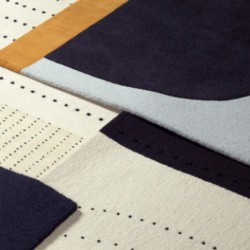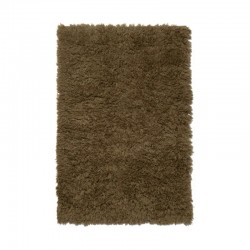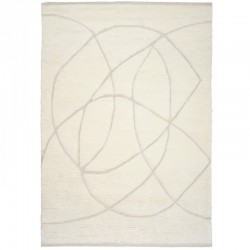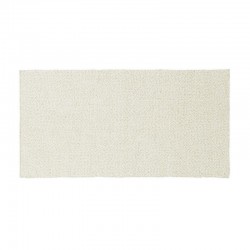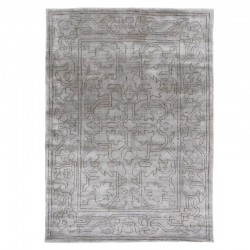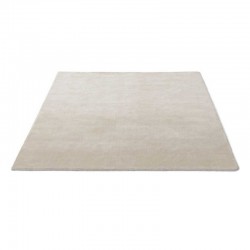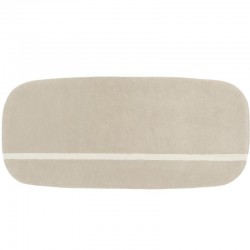
Eileen Gray not only created some of the most iconic 20th century furniture classics but also ran a studio where rugs were produced based on her designs. Some of her most beautiful designs are part of the rug collection by ClassiCon. Monolith is based on Eileen Gray’s gouaches and pencil drawings from the 1920s.
The design is characterised by beige horizontal and vertical lines of varying lengths that elegantly accentuate the earthy dark grey background. In some places, the lines cross without touching and suggest a structure that seems to divide the rug into square spaces of different sizes. Hand-knotted from the finest 100% new wool and produced to the highest quality in Nepal, Monolith is yet another impressive design that brings the artistic work of the Irish designer into focus.
- Specifications
Rug made of 100% hand-spun New Zealand virgin wool. Hand-woven with 80 knots per square inch (6.45cm²). Environmentally friendly colour pigments, tested according to OEKO-TEX® STANDARD 100. Low-maintenance, suitable for vacuum cleaners.
- Size Description
Available in standard sizes 200 x 300 cm or 250 x 375 cm.
-
Eilleen Gray
Eilee Gray was born in Enniscorthy, Ireland, she spent her childhood in London and was among the first women to be admitted to the Slade School of Art where she took up painting in 1898 before undergoing an apprenticeship in a lacquer workshop. She moved to Paris in 1902 where she quickly established herself as one of the leading designers of lacquered screens and decorative panels.<p>During the ‘20s and ‘30s she became one of the leading exponents of the revolutionary new theories of design and construction and worked closely with many of the outstanding figures of the modern movement, including Le Corbusier and JJP Oud. Well to the fore of this group she exhibited chrome, steel tube and glass furniture in 1925 - the same year as Mies van der Rohe and Marcel Breuer and well before Le Corbusier. Her next major contribution to design was in architecture. Encouraged by Le Corbusier and JJP Oud, she designed two houses in the Alpes Maritimes, one at Roquebrune (built 1927-29), the other at Castellar (built 1932-34).</p><p>After the war and up to her death, she continued to work as a designer, on both major projects like the cultural and social centre which occupied her from 1946-47, and on a number of smaller furniture designs. In 1972 she was appointed a Royal Designer to Industry by the Royal Society of Art, London. In 1973 Eileen Gray signed a Worldwide contract with Aram Designs, London, to bring her designs into production for the first time. The Museum of Modern Art added her legendary Adjustable Table E 1027 to its permanent design collection in 1978.</p><p>Eileen Gray Kollektion: Authorised by The World Licence Holder Aram Designs Ltd, London.</p>

Related products


Moooi Carpets Blended 4 Colours – Cloudy Blue
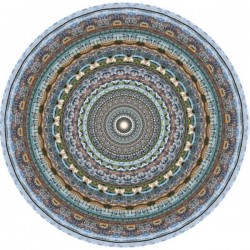
Moooi Minneapolis: June 2016
Ferm Living Forma Wool Rug Small
Moooi Eden King Signature Carpet

Moooi Vancouver: August 2016
Fritz Hansen Dots Rug
Classicon La Lune Rug
Ferm Living Meadow High Pile Rug
Linie Design Lineal Sweep Rug
Normann Copenhagen Polli Rug
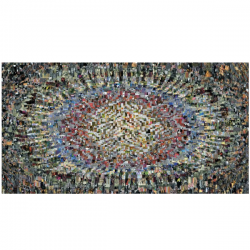
Moooi Diary 1 Signature Carpet
Linie Design Kaito Rug
&Tradition The Moor Rug ap5
Normann Copenhagen Oona Carpet 90 x 200cm
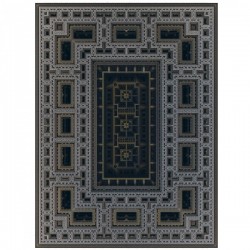


 EUR
EUR






